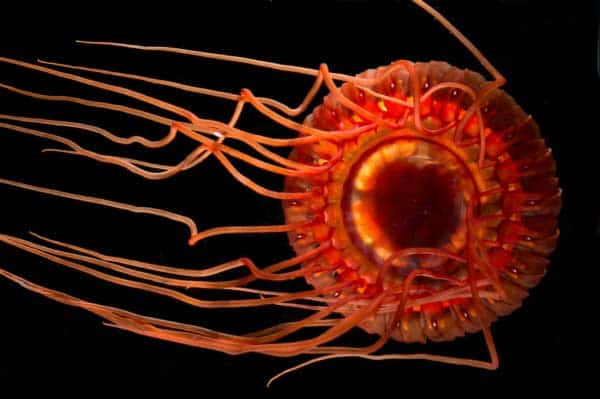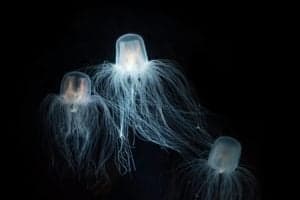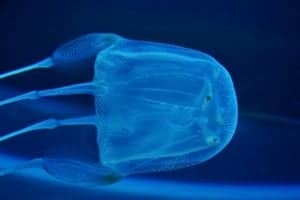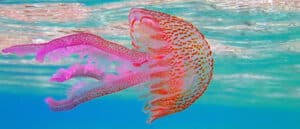Life first evolved in the oceans and continues to expand to this day. What are some of the oldest animals living in the ocean? Let’s meet the 5 oldest sea creatures still alive today.
5 Oldest Sea Creatures Still Alive Today
These are 5 of the oldest sea creatures still alive today:
1. Metazoans: 775 Million Years Old
Metazoans are all animals in existence. The first metazoans began as small animal zooplankton that drifted in saltwater currents around the globe. They evolved into existence around 775 million years ago from a single-cell ancestor consuming food while drifting through the earth’s oceans.
It’s worth mentioning that the first animals appeared on the planet due to the birth of metazoans. That was the spark that ignited the ascent of life into humanity. 775 million years ago, life diverged into plants and animals, shaping the world as we know it.
Some defining characteristics of metazoa are being multicellular and consuming energy as food instead of producing their own through photosynthesis. They also need oxygen to grow.
In metazoans, there is a definitive difference between tissue and organs. Tissue types are universally created and exist all over the body to perform basic tasks. Organs are made of tissues in an exacting way designed to perform a specific function.
2. Jellyfish: 500 Million Years Old

Comb jellyfish are common in the Atlantic Ocean.
©Kondratuk Aleksei/Shutterstock.com
Jellyfish have been in the oceans for around 500 million years. They sprung into existence during the Late Precambrian Era. They’re incredibly diverse and exist in various water temperatures between the ocean’s surface and the deep sea.
They are large zooplankton because a lot of them drift with ocean currents. Not all are helpless against currents, however. They were most likely the first animals to use muscles to control their movement in the water.
Jellyfish have survived this long due to their adaptability occurring in different stages in their life. They start as tiny polyps on ocean floors and mainly become large swimmers, although a few remain anchored to a substrate their entire lives.
Their bodies are made of a hollow jelly called mesoglea. This jelly makes up its hydrostatic skeleton. Jellyfish depend on environmental water pressure to maintain their shape and body structures.
3. Limpets: 450 Million Years Old
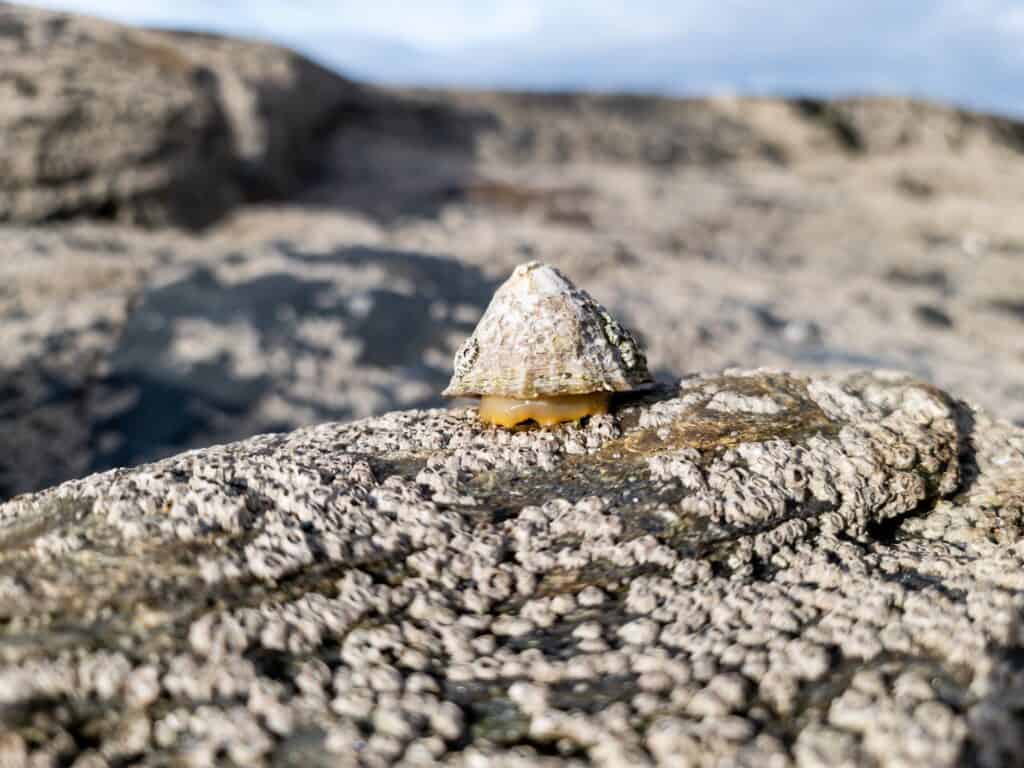
Limpets will move around while feeding but usually return to a favorite resting spot.
©Lukassek/Shutterstock.com
These animals have been on earth for around 450 million years, and their fossils date back to the Middle Ordovician. They are snails with conical and dish-shaped shells and various kinds of limpets. Historically, they were a common food source in coastal areas.
Other animals look like limpets but don’t have the proper anatomy for this classification. These animals live in fresh and saltwater environments though the saltwater varieties appeared on earth first.
Limpets are well known for their ability to strongly attach to rocks along seashores. For some limpets, suction is not their sole mechanism of rock attachment. They also use mucus that’s like glue.
These snails aren’t stationary. During high tide, they cruise around on the rocks they live on. They usually return to the same spot they left during low tide and find that spot by following their mucus trail back.
4. Horseshoe Crabs: 445 Million Years
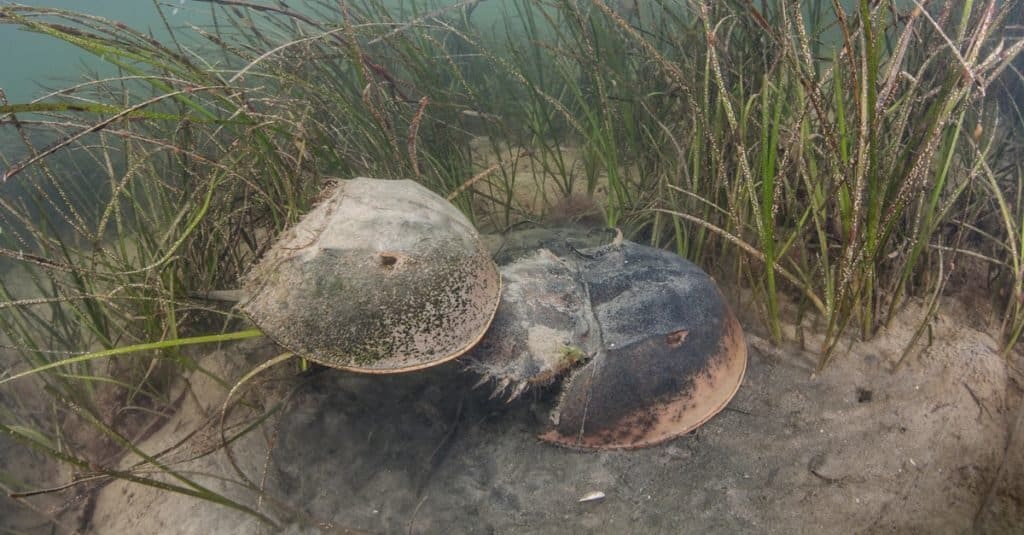
A pair of Atlantic horseshoe crabs (Limulus polyphemus) mate. These crabs are marine chelicerate arthropods commonly found from the Gulf of Mexico up to Canada.
©Ethan Daniels/Shutterstock.com
Horseshoe crabs date back to 445 million years ago. They became a globally dispersed animal around 365 million years ago. Their heads are curved like a horseshoe which is how they got their name.
Today, horseshoe crabs live on the shores of the Atlantic Ocean in North America. They also have a presence along the Gulf Coast. They exist in the Pacific Ocean and the Indian Ocean around Asia.
While crab is in the name of this animal, it isn’t a crab at all. It’s more closely related to mites, spiders, and ticks. Their tails are called telsons, and they’re used to flip the horseshoe crab back over should they end up on their backs. They are not stingers, and they aren’t poisonous.
A horseshoe crab’s blood is blue instead of red due to the protein in its blood that transports oxygen-containing copper instead of iron. Iron is what makes our blood red, whereas copper makes blood blue.
Horseshoe crabs are an important food source for other animals. Fish, turtles, and birds rely on them as a diet staple.
While horseshoe crabs have no teeth, they can crush their meals between their legs. They hunt at night and eat clams, worms, and other small bottom dwellers.
5. Coelacanths: 410 Million Years Old
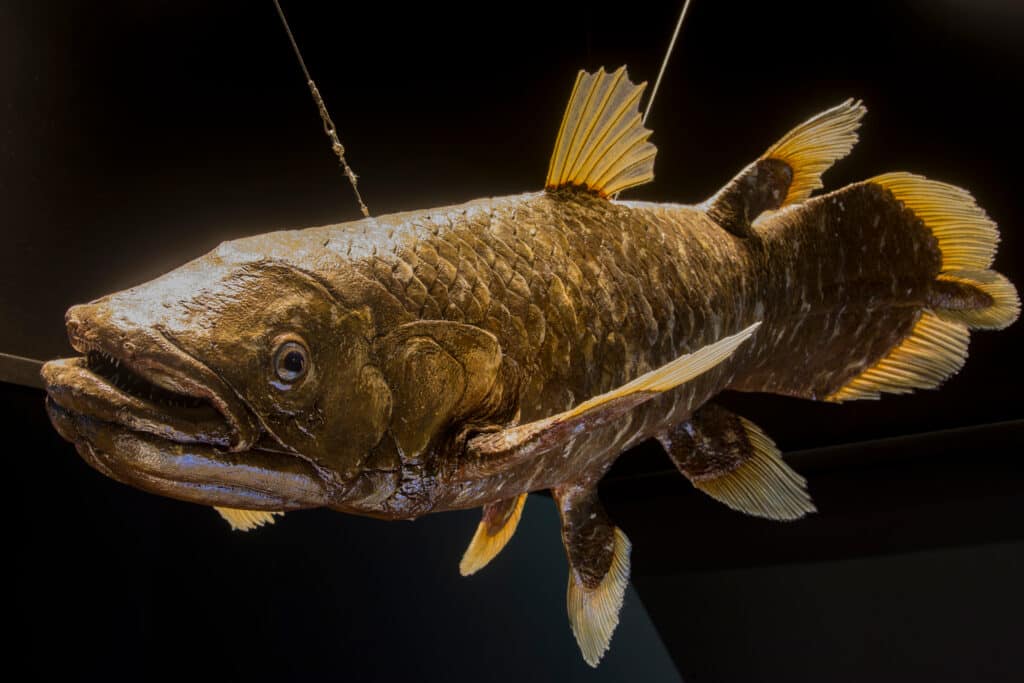
Coelacanth have been swimming in oceans for over 410 million years, and they’re the most primitive lobe-finned fish in existence.
©Danny Ye/Shutterstock.com
Coelacanth have been swimming in oceans for over 410 million years, and they’re the most primitive lobe-finned fish in existence. There are two identified species of coelacanth, with one making a home near the east coast of Africa and the other existing near Indonesia. These deep-sea fish experienced their heyday around 250 million years ago during the Early Triassic.
Until recently, it was believed that the coelacanth was extinct. Scientists speculated that it disappeared soon after the last major extinction event on the planet around 66 million years ago. In 1938, they were rediscovered near South Africa.
Coelacanths diverged from lungfish, and then lungfish transitioned into animals that eventually crawled onto land. Previously, it was believed that coelacanths were the missing link between ocean and terrestrial life, but this has been proven false.
These large fish have 10 fins, allowing them to move through the water in unique ways. One example is swimming belly up, which is possible because coelacanths have swim bladders filled with oils and fat instead of air. It swims belly up to see the sea floor and spot its prey.
Scientists know that coelacanths are a food source for large deep-sea animals. They know this because coelacanths flee from human submersibles. They’re afraid of predation. A few coelacanths have been seen with healed shark bites on them.
Up Next
- Oldest Living Animal on Earth Today
- Discover the 5 Oldest Land Animals Alive Today
- Discover the 12 Oldest Prehistoric Animals Still Alive Today
.
Thank you for reading! Have some feedback for us? Contact the AZ Animals editorial team.

